
Astroinformatics

Movies
Magnetic flux concentrations in turbulent convection:
Formation of magnetic concentrations from an initially uniform field in highly stratified turbulent convection.Vertical velocity Uz and magnetic field Bz from a run with an imposed horizontal field of 920 Gauss and 96 Mm x 24 Mm simulation domain near the surface at a depth of (z = 0.6 Mm): (H.264, 384MB).
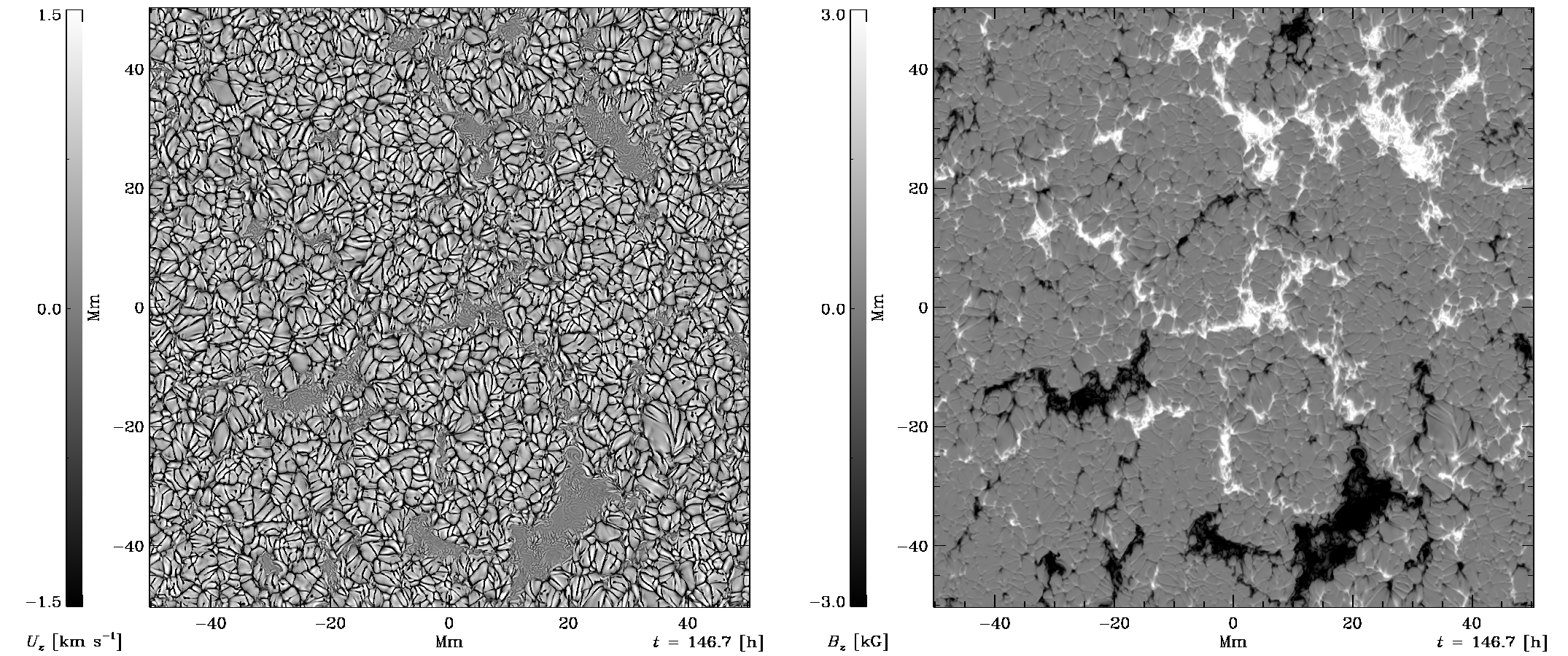
Same as above but with an imposed vertical field of 230 Gauss.
(H.264, 76MB).
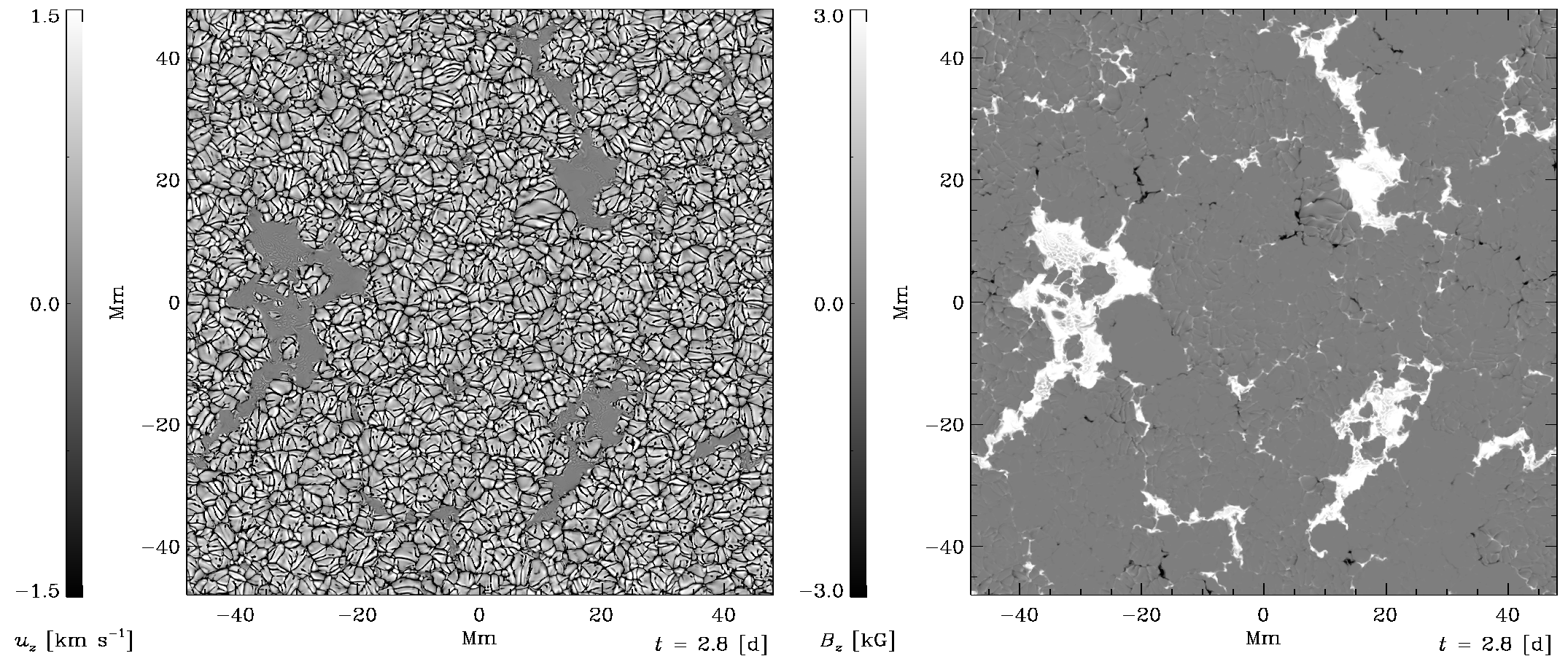
The first ever solar-like cyclic and equatorward migrating dynamo solutions
from direct numerical simulations were recently obtained by the CMDAA
group members and their collaborators from NORDITA. See also the
associated papers
and Nordita
news article
Longitudinal magnetic field
Bφ
near the surface (r = 0.98R):
(AVI, 68MB).
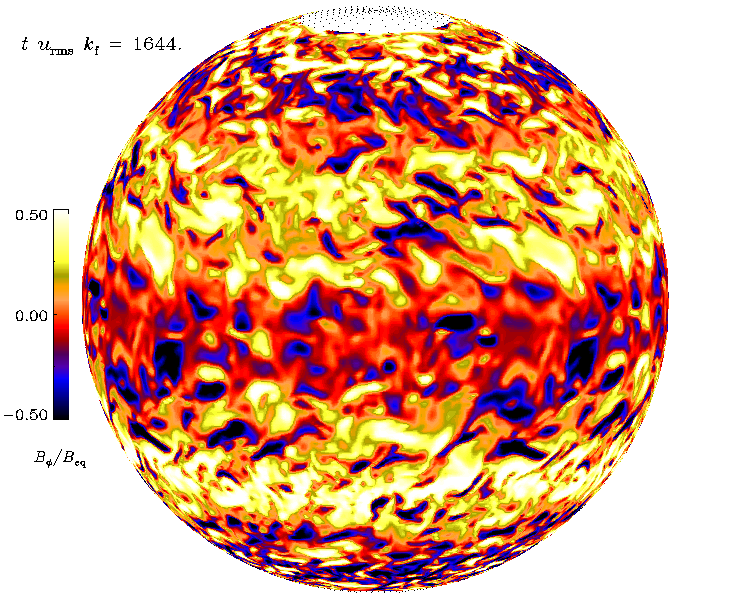
Large-scale dynamo action in DNS of convective turbulence
While stars and other astrophysical objects of interest are never Cartesian boxes, the localized and restricted geometry is very often required for achieving high enough spatial resolution to model turbulence. In such models with large-scale shear and/or rotation, magnetic fields are observed to grow and their scale increase to match the size of the computational domain; such a phenomenon is called as a large-scale dynamo, for the first time obtained in local DNS simulations during the CSC Grand Challenge project DYNAMO08.
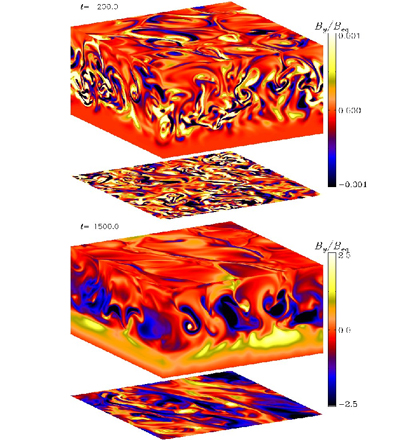
The azimuthal magnetic field at early stages (upper panel) and later stages (lower panel) clearly demonstrating the tendency of the field to cascade towards larger scales. See a video, (17 Mbytes) of the growth of the magnetic field (be patient, the growth of the field takes some time) and the associated papers.
Turbulence in the interstellar medium
The deaths of massive stars, supernova explosions, are the most powerful drivers of turbulent motions in the medium between the stars. This turbulence takes part in the generation of galactic magnetic fields.
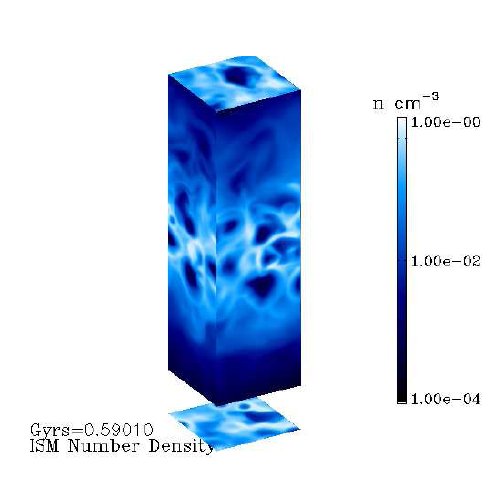
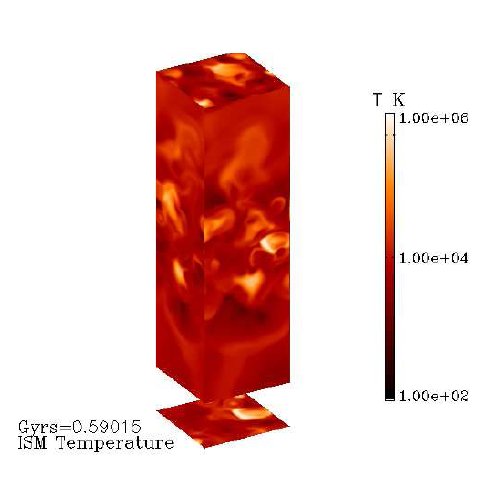
Density and temperature field from models of supernova-regulated interstellar matter. See the associated papers and a movie of the evolution of the azimuthal magnetic field (SN.avi, 13 Mbytes).
High-order finite differences using graphics processing units (GPUs)
One way to efficient modeling of turbulence and related phenomena is provided by high-order finite-difference schemes. These algorithms provide a massively parallel framework of computational fluid dynamics. Therefore, they are, in principle, also ideal to be transferred to graphical processing units (GPUS). One problem, however, are the large ghost (or halo) zones that need to be communicated between the computing elements - a challenge for GPUs. (Astaroth_velfield.gif.). Image credit Miikka Väisälä.
Open Science - home made movie about sunspots
Teemu Willamo explains some of the pitfalls with amateur solar astronomy and a brief understanding of how magnetic fields are related to the formation of sunspots. (Auringonpilkut_subtitles.avi.). Image credit Teemu Willamo.